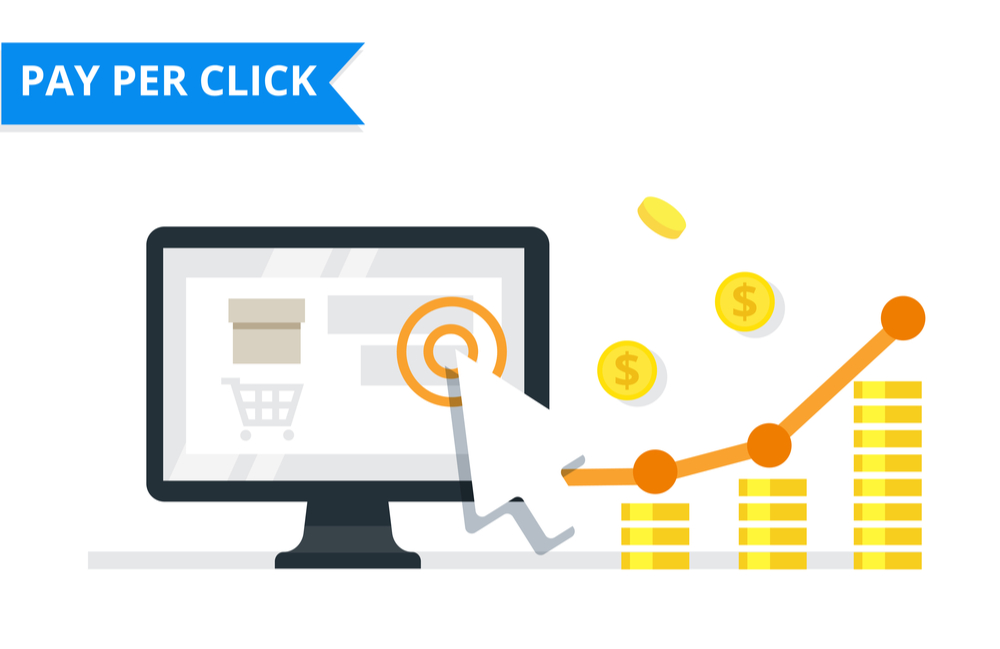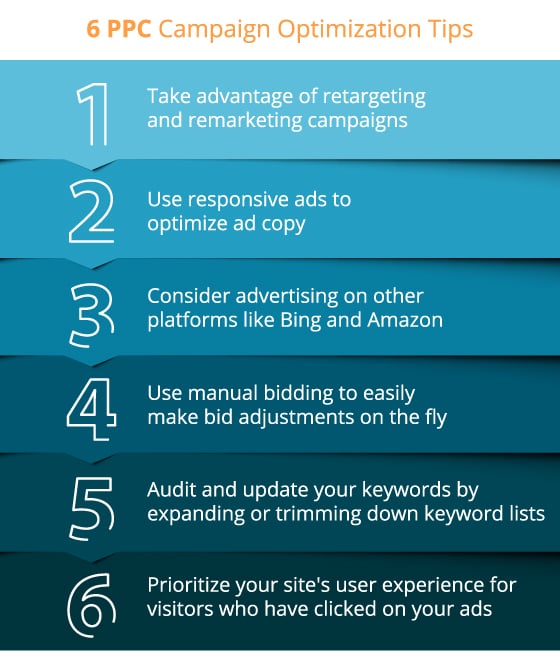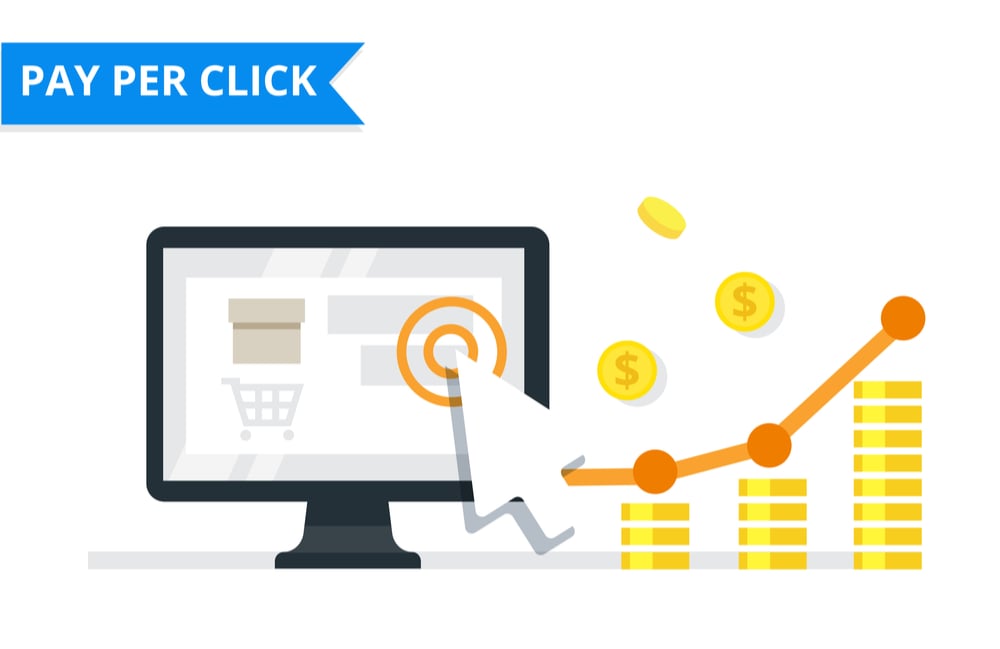
It seems like everybody is using Google Ads these days. Even your weird neighbor who parks his car on the lawn. But there’s a good reason for this. Pay-per-click (PPC) advertising is a proven way to drive new customers to your business, regardless of the niche your business fills.
There’s more competition than ever before, and everyone is fighting to get in front of the same eyeballs. Properly optimized campaigns are the only way you’re going to make an impact with PPC ads. In this article, we’re going to cover some crucial PPC campaign optimization tips that can help make your ads more visible, more engaging, and more likely to convert. But first...
A Quick Review of PPC Campaigns
PPC campaigns are an advertising model in which the advertiser pays a fee each time a potential customer clicks on their ad. This model contrasts cost-per-thousand (CPM) advertising, in which the advertiser pays for a set amount of ad impressions (1,000) on a web page.
Under the PPC model, advertisers can bid the maximum amount they’re willing to pay for each click, and a virtual auction takes place with the high bidder receiving top placement. The more competition there is for a particular keyword, the more expensive the average cost-per-click will be.
PPC advertising is considered to be the one of the most effective forms of online advertising, as you’re only paying for the results your ads generate. You’ll find PPC ads virtually everywhere on the web, and especially on search engines like Google or Bing, social networks like Facebook and Instagram, and marketplaces like Amazon or eBay.
1. Remarkable Results from Remarketing
Two out of every hundred visitors to your site will spend money with you on that first visit. In other words, 98% of the people clicking your ad in the search results for the first time will be spending $0 with you today. Does this mean you’ve failed as a marketer? Of course not. Still, you need to make it easy for those people to pull the trigger when the time is right.
The best way to do that? Remarketing campaigns. Google’s remarketing tools are the best in the business, and they’re the best way to increase your visibility at the specific times your target audience is ready to make a purchase. With Google Ads, you can segment remarketing lists in tons of ways, making it easier to market to users based on their needs. A remarketing ad group can help boost conversion rates significantly, and it’s one of the best ways to optimize your PPC campaigns. Simply put, if you aren’t using retargeting and remarketing campaigns, you are setting money on fire.
2. Use Responsive Ads to Optimize Your Copy
Responsive ads allow you to optimize your ad copy and messaging with virtually no effort on your part. With responsive ads, you’re able to provide Google with a handful of variations on your headline and body copy. Google does the work of testing the variations against each other and then pushes your most effective ads to your audience.
While responsive ads can be incredibly beneficial, you'll need to take extra care in crafting your ad copy. Make sure that any variation of your headlines and body copy makes sense together. If headline A doesn’t jive with description C, that ad variation will be useless, and it will provide little insight into how well-optimized your Google Ads are.
When creating copy for responsive ads (or regular ads, for that matter), make sure your ads are hitting all the marks:
- Use power words. If it’s “free” or “guaranteed”, that’s an excellent ad in our book.
- Fall back on stats and numbers to illustrate your point. For example, maybe you’ve determined that you have just reached 30,000 satisfied customers. Definitely drop that number in your ad.
- It’s all about the user. Speak directly to them in a conversational tone using words like “you” and “your.”
- Target the right keywords (and negative keywords).
- Speak to the emotions or problems of the customer. Empathize.
3. Put Some of Your Google Eggs in Amazon and Microsoft’s Baskets
No one can dispute Google’s dominance when it comes to PPC advertising, but that doesn’t mean that other platforms aren’t worth considering. Search engines like Microsoft Bing have far less competition, which helps keep your cost per click down, and their users are searching with the same intent as those on Google. Microsoft also offers some unique features that can help you tailor your ads more closely to user intent. Include ad extensions like a call to action or review snippets to help make your ads more appealing. Microsoft also provides some valuable insights into how your competitors' ads are performing.
Amazon advertising is another viable solution, and it’s an ideal platform for driving conversions. Amazon users are usually further along in the purchasing journey, and they’re visiting Amazon because they’re ready to make a purchase. Amazon allows you to advertise products, showcase your brand when a user enters a relevant search query, or insert display ads on suitable products. You can make use of Amazon’s advertising whether you use Amazon to sell your products or not.
4. Take Control with Manual Bidding
While your ad copy is absolutely awesome, your ads are never going to reach their full potential if you’re leaving all of your digital marketing optimizations up to Google. Google optimizes your ads so that they receive as many clicks as your budget allows. That doesn’t mean that you’ll be receiving the right clicks, however.
If your ads aren’t performing as they should, there’s no easy way to optimize your campaign. With manual bidding, you can make bid adjustments on the fly, boost your click-through rate, and lower your cost per action taken by each visitor. A manual bidding strategy will require more stringent control over your ads, but it can be an excellent way to improve your quality score, drive down costs, and increase conversions.
5. Audit Your Keywords
When’s the last time you took a long, hard look at your keywords? One bad habit that many of us are guilty of is taking a “set it and forget it” approach to keyword targeting. Now is a great time to consider things like expanding your current keyword lists, updating your negative keyword lists, and getting rid of those that are underperforming. You may be surprised by how a few search term tweaks can affect your conversion rate.
6. Prioritize User Experience
As crucial as user experience is to a website’s success, it’s something that many businesses still fail to get right. Your entire website should be optimized to users’ intent, your content marketing efforts should speak to what your users need when they visit your website, and each ad should direct to a page on your site that delivers value to the user.
Getting a user to click your ad is a victory, but it’s not the goal we’re after. Once you have them on your site, it’s up to you to do everything you can to keep them there and convert them. Delivering an excellent user experience is still the best way to do that.

Final Thoughts
In spite of the rising competition in paid ads marketing, a fully optimized PPC campaign can do wonders for your ad visibility, conversion rate, and user experience for visitors to your website. Optimizing your campaigns isn’t always easy, but the effort is sure to be worth it when you realize your ads are making more impressions and you find your sales start to rise.
At Sparkinator, our Google-certified team will review your website and see where we can help you level up. Contact us for a free ad review so you can learn to leverage your marketing dollars more effectively.





.png?width=1625&name=logo%20(1).png)